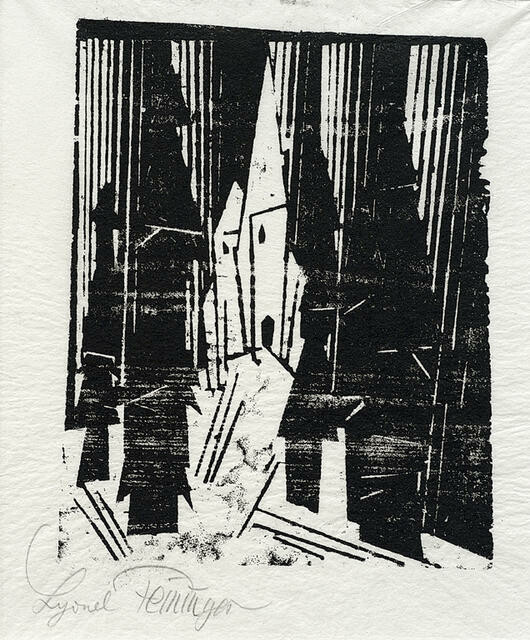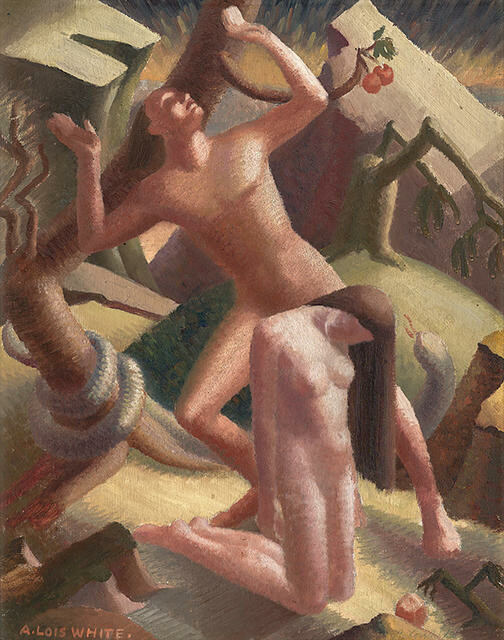Lyonel Feininger
United States / Germany, b.1871, d.1956
Wald Kirche, 2
- 1920
- Woodcut
- Purchased 2004
- 300 x 410mm
- 2004/21
Tags: buildings (structures), churches (buildings), landscapes (representations), monochrome, religious buildings, towers (building divisions), trees, urban landscapes
The American-born artist Lyonel Feininger had been living in Europe, mainly in Germany, since 1887. He visited Paris in 1911 while exhibiting work at the Salon des Indépendents, where the cubists were exhibiting their discoveries for the first time. Writing to a friend in 1913 from Berlin, Feininger described the moment: “In that Spring I had gone to Paris for two weeks and found the art world agog with Cubism – a thing I had never heard even mentioned before, but which I had already, entirely intuitively, striven after for years.”
Feininger’s artistic development from this point led to an invitation in 1919 from the German architect Walter Gropius to become the first master at the Bauhaus,a new school of art at Weimar. He produced many woodblock prints for their publications, including a futurist-inspired cover for their first manifesto, featuring a cathedral in a forest, a theme to which he often returned. (In Modern Times, 18 December 2015 – 11 September 2016)
Exhibition History
Wald Kirche 2 (Church in the Woods 2) was included in the first Bauhaus portfolio, produced in 1921, entitled Zwölf Holzschnitte von Lyonel Feininger (Twelve Woodcuts by Lyonel Feininger). The composition centres on a church in a pine forest, its spire echoing the strong vertical emphasis of the shafts of light in the background as well as the dark pine trees in the foreground. The woodcut print was one of Feininger’s favoured mediums. He produced his first examples in 1919 and went on to create over 300 during his career.
Born in New York, Feininger was sent to study music in Germany in 1887. He very soon changed to studying drawing at the Akademie der Kunste in Berlin and the Académie Colarossi in Paris. In 1919 he was appointed the first master of the Bauhaus, the new School of Art of the Weimar Republic. In 1937 he left Germany for the United States, eventually settling in New York. Late in his career, Feininger was elected president of the Federation of American Painters and Sculptors.
(Label date unknown)










